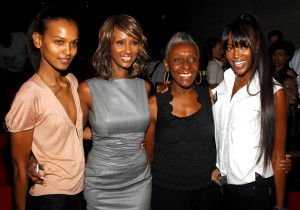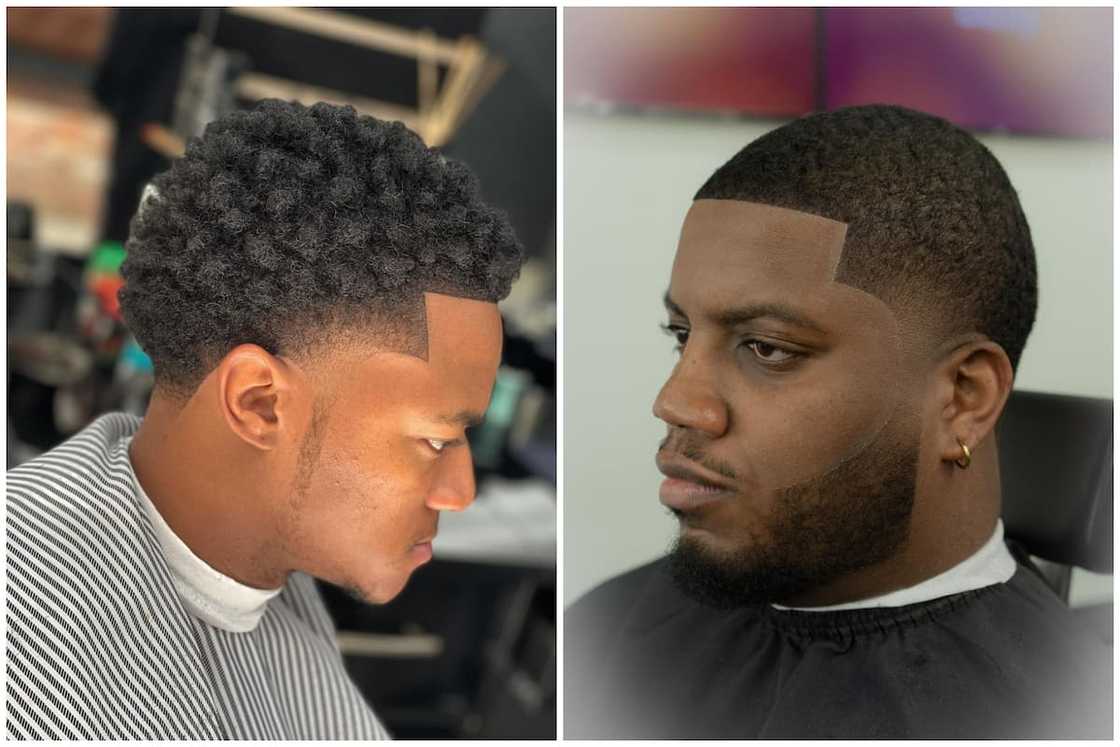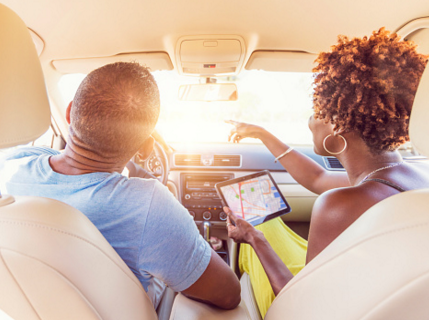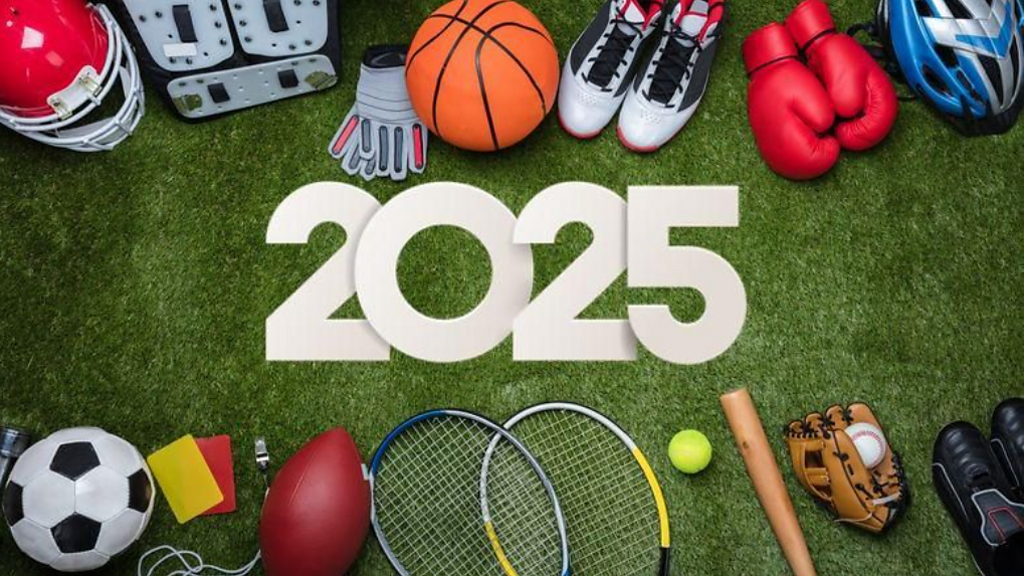(ThyBlackMan.com) Naomi Campbell, Iman, Alek Wek, Tyra Banks these are the names you think of when you say “black models”, FAMOUS black models. But where are their successors, where are the new iconic black names? Are they coming at all?
According to a new article in the NY Times, they are a long way away. “The New York shows are as dominated by white models as they have been since the late 1990s, roughly at the end of the era of supermodels. Jezebel, a blog that has been tracking the appearance of minorities in fashion shows since the debate erupted, noted that the numbers are hardly encouraging. After a notable increase in 2009 that followed extensive news media coverage, the representation of black models has remained fairly steady until this year, when they accounted for only 6 percent of the looks shown at the last Fashion Week in February (down from 8.1 percent the previous season); 82.7 percent were worn by white models.
In Europe, where Phoebe Philo of Céline, Raf Simons of Dior and many others have presented entire collections using no black models at all, the opportunities have been even less favorable for minorities.”
Since Beverly Johnson became the first black woman to cover Vogue, not much has changed. Alesha Dixon recently said: “Sadly, I’ve learnt that prejudice still exists in parts of the entertainment industry,” Dixon said. I did an interview with a magazine once and the journalist quite openly said they wouldn’t put a black person on the front cover because the magazine wouldn’t sell.”
Iconic supermodel Iman says: ““There is something terribly wrong. We have a president and a first lady who are black. You would think things have changed, and then you realize that they have not. In fact, things have gone backward. It feels to me like the times need a real hard line drawn like in the 1960s, by  saying if you don’t use black models, then we boycott. If you engage the social media, trust me, it will hurt them in their pockets. If you take it out there, they will feel the uproar.”
saying if you don’t use black models, then we boycott. If you engage the social media, trust me, it will hurt them in their pockets. If you take it out there, they will feel the uproar.”
Fashion designers, merchandisers and publicists are all mainly white. So in their eyes they design clothes with white figures in mind, to sell to white folk. They, in a way, don’t understand that black people buy clothes too. They think the addition of blacks brings the figure down (unless it’s sport, a black basketball player is, paradoxically, VERY appealing.) Often designers say cast white models for “aesthetic reasons”. They also think black people “Can’t afford fashion anyway”. Earlier this week Oprah Winfrey told Larry King that when she was in Zurich recently for Tina Turner’s wedding, she had what she called a “racist moment” when a clerk refused to show her a handbag. “I say to the woman, ‘I would like to see that bag on the shelf, and she says, ‘No, that one’s too expensive, I’ll show you this one.’”
Strangely, in 1980s and ’90s, designers like Calvin Klein (which is ALL white now), Gianni Versace and Yves Saint Laurent routinely cast black models without question. Though not often on the cover, magazines often featured in the pages of magazines. Interestingly most of the girls had natural curly hair, which for some sad reason is frowned upon now. Sadly for young nonwhite models today, the racial prejudice is all but explicitly stated. Often the models who apply for castings are told, “We already have our black girl”, a thing white models never have to hear.
In 2008 a short campaign to combat racism in fashion changed … nothing. And since then, almost nothing has changed.
In 2007 Bethann Hardison, a former model who went on to start a successful model agency in the 1980s that promoted racial diversity, said: “It’s the worst it’s ever been. It’s heartbreaking for me now because the agents send the girls out there to castings and nobody wants to see them.”
Sadly, things got worse. According to the NY Times: “There have been no obvious repercussions for those who still see colorless runways as an acceptable form of artistic expression. Despite a history of polite and often thoughtful discussions within the industry, there are still many designers and casting agents who remain curiously blind to black models, or unmoved by the perception that fashion has a race problem in the first place.”
Part of that problem, Ms. Hardison said this week, is that “no one in power slaps these designers around. All I want to say is, you guys have a lot of explaining to do. If you are going to be bold enough to do it, then please be bold enough to explain it.”
Last month Edward Enninful, a successful stylist who has worked for magazines for 25 years, posted a message on Twitter that instantly revived the debate about race and fashion, but also underscored how sensitive the subject can be for those working to make changes from inside the industry:
“If all my (white) counterparts are seated in the front row, why should I be expected to take 2nd row? racism? xoxo”
This came hot on the heels of models Jourdan Dunn, Joan Smalls and Chanel Iman calling out modeling industry for being racist.
According an article in The Edit magazine: “There were times when Dunn would be on her way to castings and told to turn back because the client “didn’t want any more black girls”. There was even one instance when a makeup artist announced on a shoot that she didn’t want to make-up Dunn’s face because she herself was white and Dunn was black.”
Last month Dunn was cut from Christian Dior’s haute couture fashion show in Paris because of her chest size, she joked on her Twitter: “‘I’m normally told I’m cancelled because I’m ‘coloured’ so being cancelled because off [sic] my boobs is a minor.”
Chanel Iman told the Times: “Designers have told me, “We already found one black girl. We don’t need you any more.” I felt very discouraged. When someone tells you, “We don’t want you because we already have one of your kind,’ it’s really sad.”
Joan Smalls said: “I have dealt with adversity from people I thought were on my side. Past agents, when I would come to them for advice, would just tell me: ‘There’s only room for one.’ (…) One girl of colour. I had come for encouragement and I was given an excuse. It was disappointing. Little by little, my hopes were going down. I remember calling my dad after a tough time in Paris when I was going to casting after casting where they wouldn’t even look at my book. I was sitting on a bench on the Champs-Elysées, and starting to cry. I’m a strong person; I don’t like to show my emotions, especially to strangers on the street. My father told me to keep my head up high and do my best. And he was right.”
The fact Joan, and some other black models make it is by being lucky enough to find supportive bigwigs. In Joan’s case: Riccardo Tisci from Givenchy and Karl Lagerfeld from Chanel. It is also exactly the same case for Naomi Campbell who had Gianni Versace and Yves Saint Laurent behind her. This is how most models of color make themselves known to fashion and to the rest of the world through the platform of fashion’s elitists.
Edward Enninful says: “What is happening on the runways is the result of a very Eurocentric aesthetic that has taken over for the last 10 years,” he said, “and that has excluded other races.”
Kyle Hagler who was a champion of Smalls said: “Unfortunately, you do have people in positions of power who do not appreciate an idea of beauty outside of their own.”
Earlier this year James Scully, a casting director whose clients include Tom Ford, Derek Lam and Stella McCartney, went public with a scathing critique of shows that did not reflect a diverse casting last season, specifically naming Dior, Saint Laurent, Louis Vuitton and Chanel. “I feel the Dior cast is just so pointedly white that it feels deliberate,” he said in a BuzzFeed article. “I watch that show and it bothers me — I almost can’t even concentrate on the clothes because of the cast.”
“There are not only white people around the world,” said Riccardo Tisci, the Givenchy designer, who has been heralded for representing a range of races, ages and genders in his marketing. Of those who cast only white models, he said: “I think that is called laziness. People sometimes think, ‘It’s easier, we’re used to it.’ ”
Former editor of the American version of Vogue, André Leon Talley has opened up about his past experiences of racism in the fashion world. Speaking to Vanity Fair magazine he admits to wondering why, with such a packed résumé, he’s never been the editor of a major magazine. He says, “People stereotype you. What person of color do you know who’s in a position like that, be it a man or a woman, unless it’s Essence magazine?”
Starting this Fashion Week in September, Ms. Hardison is organizing a social media campaign to bring public scrutiny to specific designers who do not use black models. By making consumers aware of the designers who do not embrace minorities on the runway, she said, “I wonder if that would make them have second thoughts about buying the shoes, the accessories and the bags.”
Staff Writer; Dannii Cohen
One may also connect with this talented comedian via Twitter; Divinevarod and Facebook; D. Cohen.

















Aren’t we tired of complaining about what white folks won’t do for what we should do for ourselves. Black Folks! White people Suppose to be racist. Get over it and get your ass together.
THERE has to be some psychological reason why we see the need to be accepted by these people to the degree that we are not even conscious of the fact that it we be more profitable to start our own endeavor wither its politics or business; it seems if its not coming from white people it has no value and we don’t what it.
@ Dcarter910
That’s the truth Brother.
Black Unity means financial independence and happiness
The average black woman is so much more beautiful than even the best looking white woman, it isn’t even funny. Why would you put women on a runway that make you feel inferior? White men want black women more than they want white women but they are afraid of rejection from family and friends. Any docile black woman with a liberal education is hunted down by white men. White women know this, and all the butt injections, lip inections, and skin tanning can’t change that. Modeling is where whites try desperately to hold onto and force their image of beauty down the masses throats in an attempt to maintain the image of superiority. Its a power play that they are winning on the runway but losing in liberal academia and suburban areas where interacial relationships are on the rise. When I get thirsty I’m not looking for an anorexic, thin lipped, pale skin white girl. Pass me a delicious glass of wholesome sista (hard to find but there still plenty out there)
Why not create new fashion shows and new designers that appreciate all colors of people, instead of begging and pleading for people who obviously don’t care about having an open mind and enjoying the many different colors of the human race. When you do this and it was mentioned in the article, you’re taking money away from them and they will have no choice but to change or go out of business.
Will this happen overnight, of course not, but it will never happen if we continue to beg people to let us participate in the game they setup. You can apply this to the Black community as a whole, which is why we continue to struggle as a people.
Black Unity means financial independence and happiness